Yoga for Thyroid – 7 Poses to Transform Your Health

Shamlee Pathare
November 21, 2022

Shamlee Pathare
November 21, 2022
The Bhagavadgita says that “Yoga is the journey of the self, through the self, to the self”. Including yoga in your lifestyle can do wonders for your body. It is a well-known fact that useful yoga poses can reverse the severe effects of the thyroid. Nowadays, thyroid disorder, especially hypothyroidism, is becoming common among individuals.
The thyroid is a crucial gland for determining your rate of metabolism, growth, and body temperature. Any instability in the concentration of hormones can result in thyroid disorder. Yoga for thyroid cannot cure your condition permanently, but you can prevent any further complications with it.
Doing asanas will not only keep your glands healthy but will also regulate your metabolism towards good. Healthy changes might reduce the need for thyroid medicines. By doing so, you not only strengthen your muscles but also reduce the risk of severe ailments.
HealthifyMe aims to provide you with some beneficial yoga asanas. They will help you effectively reduce or ease thyroid issues.
Yoga for thyroid is beneficial to stimulate the throat as the thyroid gland lies there.
Doctors believe that it increases blood circulation around that area. Here are some asanas that help in preventing thyroid disorders:
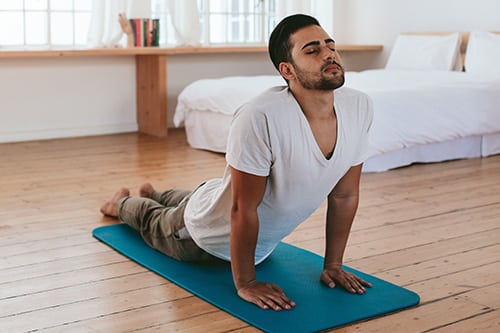
Bhujangasana is also known as the cobra pose. It is a part of Surya Namaskar. It relieves the throat area by stretching it and increasing thyroid function that helps in hypothyroidism. This asana benefits people suffering from frequent back pains. Avoid doing this asana if you have a hernia, ulcer, or have gone through abdominal surgery.
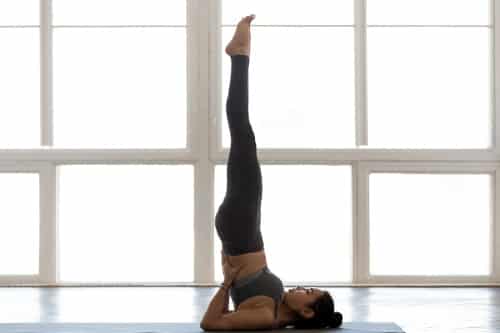
Sarvangasana is also known as shoulder standing pose. It helps your body to govern the endocrine system (hormonal system). It tends to put pressure on the thyroid gland to increase its efficiency. We recommend it for people with hypothyroidism.
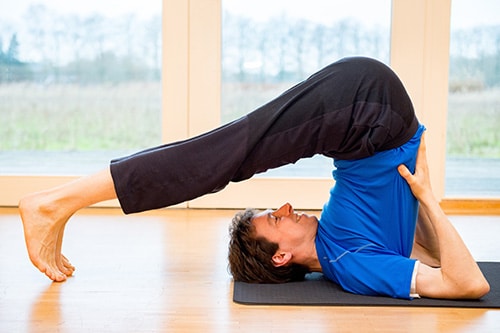
Halasana is also known as the plough pose. It has various benefits for people with hypothyroidism. This asana assists in the secretion of thyroid hormones. It will help you strengthen the abdominal muscles and relax the nervous system.
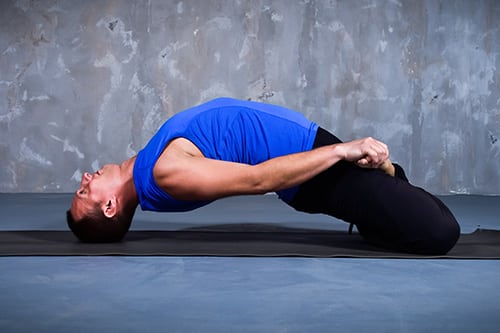
Matsyasana is also known as the fish pose. The arch of the back increases blood flow in the thyroid gland that stimulates the neck and thyroid gland to relieve any tension present. It also improves postures & relieves stress.
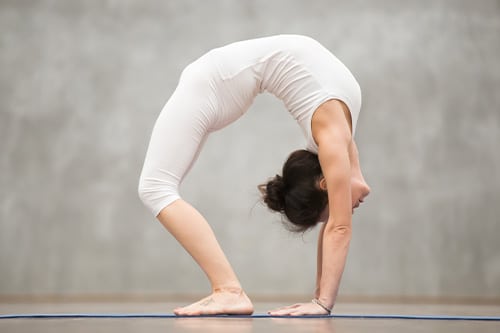
Urdhva Dhanurasana is also known as an upward bow (wheel) pose. It provides energy to the thyroid gland. It helps treat hypothyroidism.
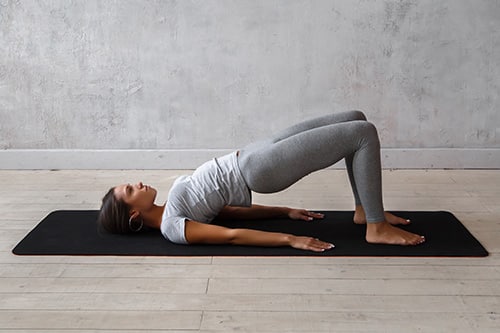
Setu bandhasana is also known as the bridge pose. It regulates your thyroid hormones by indirectly benefiting people with hyperthyroidism. It tends to increase the flow of blood in the brain and soothes it by improving blood circulation.
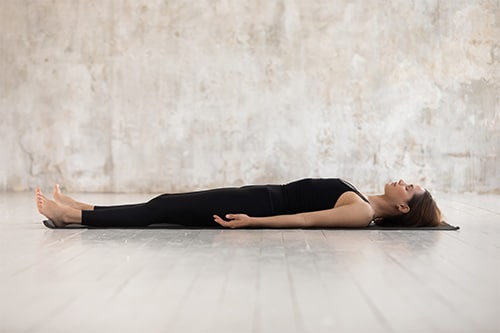
Shavasana is also known as the corpse pose. It is a pose for deep relaxation and to increase inner awareness. Though this pose requires you to lie on a flat surface, it can be very challenging. We recommend this pose for people with hyperthyroidism.
Hyperthyroidism or hypothyroidism are two types of thyroid disorders. Both of these affect life negatively. Your doctor will recommend you take proper medications and follow a healthy lifestyle. Yoga for thyroid aims for balancing your energy, hormonal levels, flexibility, and relieving stress. Yoga has positive effects on both underactive and overactive thyroid. They come under one of the most natural remedies and keep our glands healthy. It saves us from severe thyroid complications like goitre, heart diseases, mental health issues, etc. Following these asanas and ensuring the right posture can help tackle thyroid issues effectively.
A. No, yoga cannot treat hyperthyroidism or hypothyroidism. It is a holistic approach to health that can relieve your symptoms and prevent you from further complications & reduce medication gradually. Proper medication and therapies with healthier lifestyles can bring a massive change.
A. Hypothyroidism results due to insufficient secretion of hormone from thyroid glands. It decreases the metabolism of the body and leads to weight gain. It can be due to various factors like an autoimmune disorder, side-effects of medications, treatment of hyperthyroidism, and radiation therapy. It is common in women older than 60 or someone who has a family health history of thyroid disorders.
A. Shifting from a sedentary and stressful lifestyle to a healthier lifestyle is priority number one. One can prevent thyroid by following some basic rules:
A. Yoga usually does not come with any side effects. It is the most natural way of alleviating disease-causing factors. Nevertheless, pregnant women, people suffering from ulcers and hernia, and others who have had abdominal surgery should avoid performing these exercises. Consulting your doctor in such cases is the best option. It’s always recommended to consult a Yoga therapist for specific asanas and routines.


I didn’t know that yoga can cure the thyroid. After reading this post, I am planning to start yoga cause it seems beneficial in more diseases.
Nice Idea. Thanks for this.